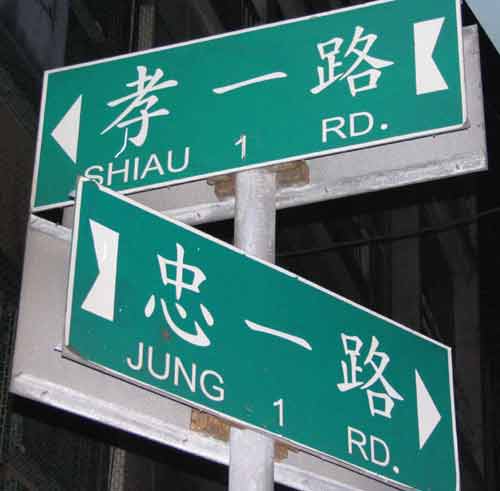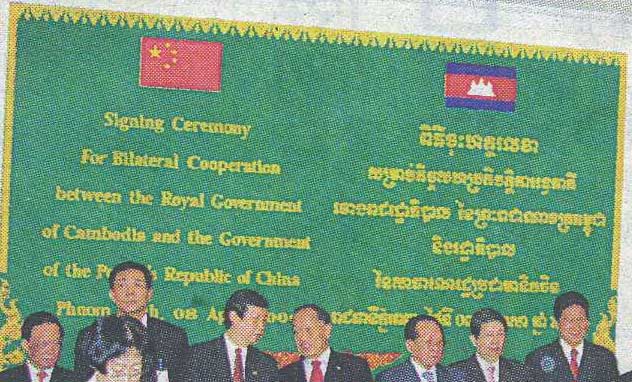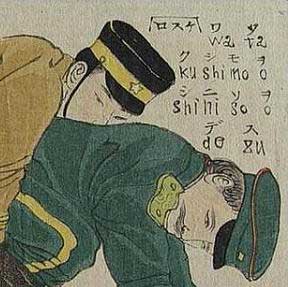Taiwan does not now nor has it ever officially used the Yale romanization system. But that hasn’t stopped the relatively common belief that the Yale romanization system for Mandarin can be found on some official signage here.
What most people take as Yale is in fact MPS2, a Taiwan-devised romanization system that dates from the mid 1980s. MPS2 was developed Taiwan in a vain attempt to counter the growing popularity around the world of Hanyu Pinyin. In other words, it was basically the Tongyong Pinyin of the 1980s, though its supporters (there must have been some) never embraced it with the same level of nationalistic fervor as Tongyong Pinyin has received from some quarters. Little wonder, then, that most people — including many who really should know better — don’t seem to have noticed that MPS2 even exits, much less that a great deal of the island’s signage remains in this system.
To some degree the confusion of MPS2 for Yale is understandable, given that the two systems have many points in common on which they differ with Hanyu Pinyin. Here are some examples.
-au rather than -ao
| MPS II and Yale |
Hanyu |
| au |
ao |
| bau |
bao |
| chau |
chao |
| dau |
dao |
| gau |
gao |
| hau |
hao |
-ung rather than -ong
| MPS II and Yale |
Hanyu |
| chung |
chong |
| dung |
dong |
| gung |
gong |
| hung |
hong |
chr, jr, r, shr
| MPS II and Yale |
Hanyu |
| chr |
chi |
| jr |
zhi |
| r |
ri |
| shr |
shi |
ts- instead of c-
| MPS II and Yale |
Hanyu |
| tsai |
cai |
| tsan |
can |
| tsau |
cao |
| tseng |
ceng |
| tsou |
cou |
| tsu |
cu |
| tsung |
cong |
| tsz |
ci |
And neither uses Hanyu Pinyin’s abbreviated vowel forms (such as -ui for -uei, -iu for -iou, and -un for -uen). But here we can begin to see some of the differences between MPS2 and Yale.
| MPS II |
Yale |
Hanyu |
| chuei |
chwei |
chui |
| duei |
dwei |
dui |
| tzuei |
dzwei |
zui |
Yale often uses w as a medial where other systems would use u.
| MPS II |
Yale |
Hanyu |
| shuei |
shwei |
shui |
| suan |
swan |
suan |
| guang |
gwang |
guang |
Yale often uses y as a medial where other systems would use i
| MPS II |
Yale |
Hanyu |
| jia |
jya |
jia |
| niau |
nyau |
niao |
| chiung |
chyung |
qiong |
This sign, in Banqiao, would read Shrjyan in Yale, not Shrjian, which is MPS2.

To review all of the similarities and differences among these and other systems, see my comparison chart of romanization systems.
To close, here are some more signs in MPS2. What in Hanyu Pinyin is written zhong is jung in both MPS2 and Yale. What in Hanyu Pinyin is xiao, however, is written differently in MPS2 and Yale: shiau and syau, respectively.

This photo was taken in Jilong.


 While a lot of things might be unusual about this old print of a Japanese soldier having sex with or simply raping a Western soldier, what particularly startled me is the use of romanization. Given that much of the text in the
While a lot of things might be unusual about this old print of a Japanese soldier having sex with or simply raping a Western soldier, what particularly startled me is the use of romanization. Given that much of the text in the 

